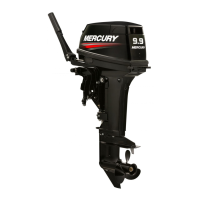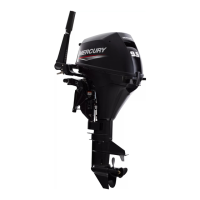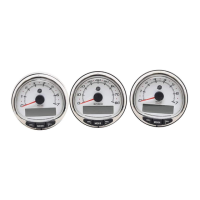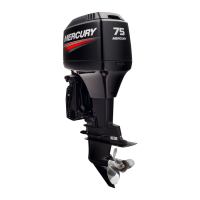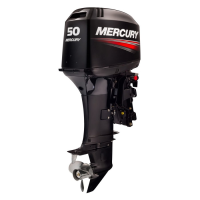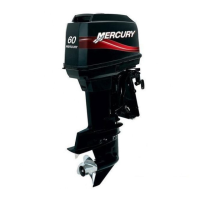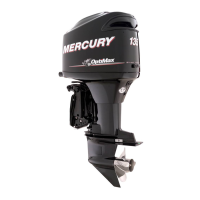5B-4 - MID-SECTION 90-830234R3 DECEMBER 1997
Power Trim - General
Information
Description
The Power Trim system consists of an electric motor,
pressurized fluid reservoir, pump and trim cylinder.
The remote control (or trim panel) is equipped with a
switch that is used for trimming the outboard “up” and
“down”, and for tilting the outboard for shallow water
operation (at slow speed) or for “trailering”. The out-
board can be trimmed “up” or “down” while engine is
under power or when engine is not running.
Trimming Characteristics
When trimming outboard from a mid-trim position
(trim tab in neutral, straight fore-and-aft position),
you can expect the following results:
TRIMMING OUTBOARD “UP” (“OUT”)
WARNING
Excessive trim “out” may reduce the stability of
some high speed hulls. To correct instability at
high speed, reduce the power gradually and trim
the motor “In” slightly before resuming high
speed operation. (Rapid reduction in power will
cause a sudden change of steering torque and
may cause additional momentary boat
instability.)
Will lift bow of boat, usually increasing top speed.
Transfers steering torque harder to port (left) on in-
stallations below 23 in. transom height.
Increases clearance over submerged objects.
In excess, can cause “porpoising” and/or ventilation.
In excess, can cause insufficient water supply to wa-
ter pump resulting in serious water pump and/or pow-
erhead overheating damage.
WARNING
Excessive engine trim angle will result in insuffi-
cient water supply to water pump causing water
pump and/or powerhead overheating damage.
Make sure that water level is above gear housing
water intake holes whenever engine is running.
Operating “Up” circuit will actuate the “up” relay (lo-
cated under engine cowl) and close the electric motor
circuit. The electric motor drives the pump, forcing
fluid thru internal passageways into the “up” side of
the trim cylinder.
The trim cylinder/trim ram will position the engine at
the desired trim angle within the 20° maximum trim
range. The Power Trim system is designed so the en-
gine cannot be trimmed beyond the 20° maximum
trim angle as long as engine RPM is above approxi-
mately 2000 RPM.
The engine can be raised beyond the 20° maximum
trim angle for shallow water operation, etc., by keep-
ing the engine RPM below 2000 RPM. If engine RPM
increases above 2000 RPM, the thrust created by the
propeller (if deep enough in the water) will cause the
trim system to automatically lower the engine back to
the 20° maximum trim angle.
TRIMMING OUTBOARD “DOWN” (“IN”)
WARNING
Excessive speed at minimum trim “In” may
cause undesirable and/or unsafe steering condi-
tions. Each boat should be tested for handling
characteristics after any adjustment is made to
the tilt angle (tilt bolt relocation).
Will help planing off, particularly with a heavy load.
Usually improves ride in choppy water.
In excess, can cause boat to veer to the left or right
(bow steer).
Transfers steering torque harder to right (or less to
the left).
Improves planing speed acceleration (by moving tilt
bolt one hole closer to transom).
Operating “Down” circuit will actuate the “down” relay
(located under engine cowl) and close the electric
motor circuit (motor will run in opposite direction of
the “Up” circuit). The electric motor will drive the
pump, forcing fluid thru internal passageways into
the “down” side of the tilt ram. The tilt ram will move
the engine down to the desired angle.
Trailering Outboard
WARNING
Excessive engine trim angle will result in insuffi-
cient water supply to water pump causing water
pump and/or powerhead overheating damage.

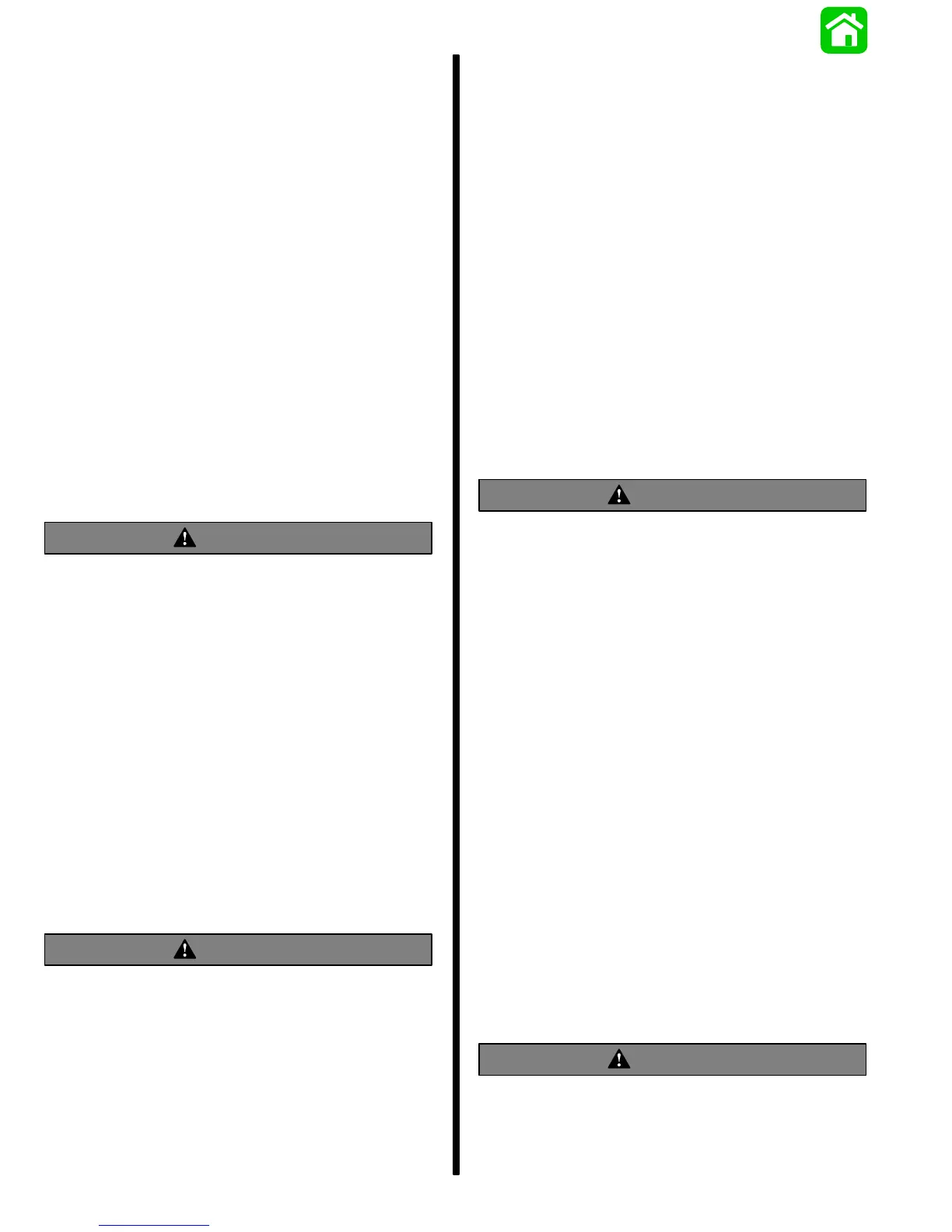